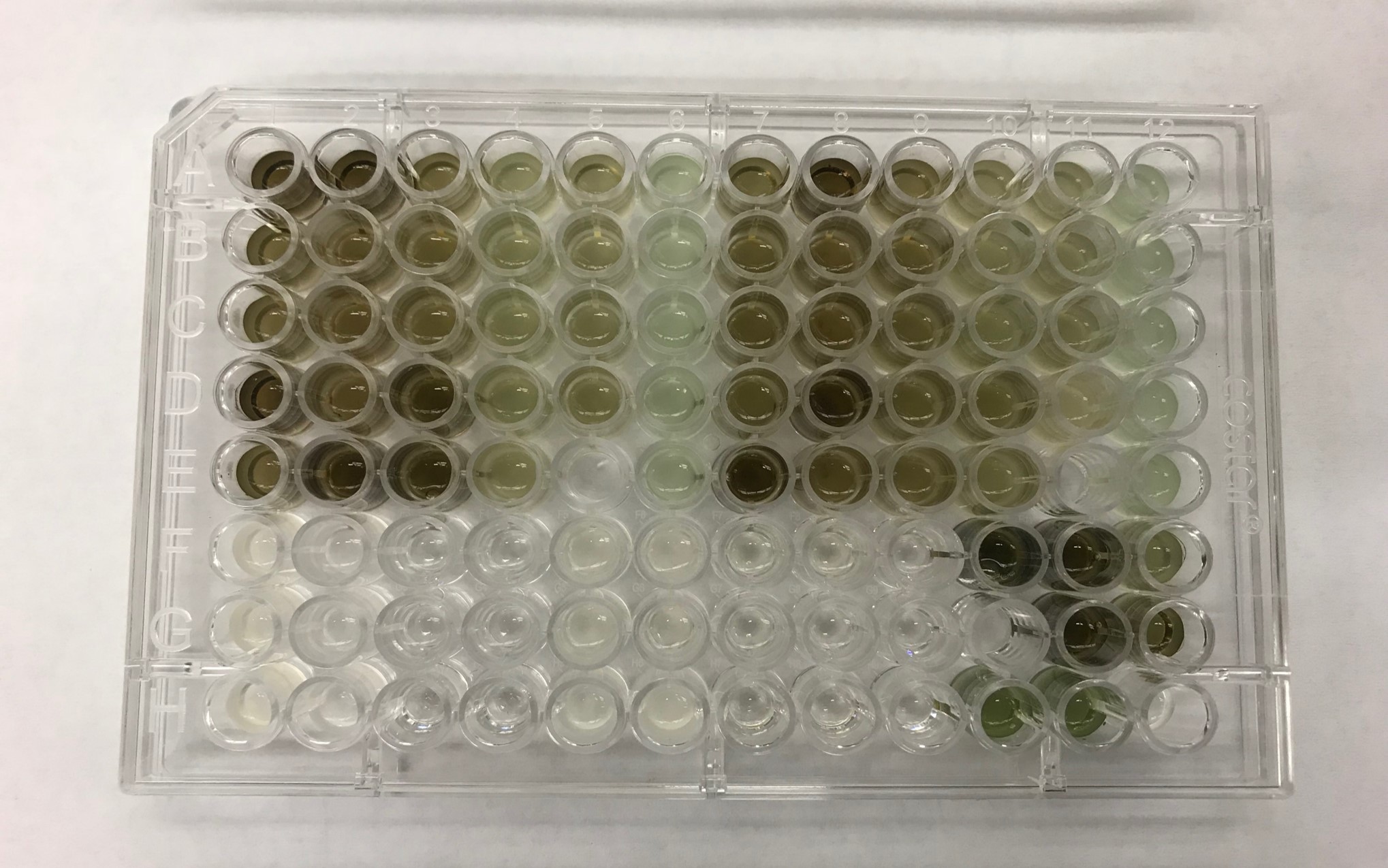Insects respond rapidly to bacterial infection with potent immune molecules called antimicrobial peptides (AMPs). Some of these peptides have potential to be used in human infections against bacteria that are resistant to other antibiotics. My students and I examine a diverse array of insects for the presence of AMPs and test their effectiveness against bacteria. We are especially interested in how parasitoids suppress, modify, or otherwise influence the immune response of the host to parasitic and bacterial infection.
Figure 5 from Duffey (2018). Example microplate showing various potential melanization reactions of immune-challenged and naive Manduca sexta hemolymph after 24 hours incubation in a microplate reader.
Figure 2 from Bakeer (2017). Stink bug parasitization and E. coli challenge: (A) Two T. pennipes eggs oviposited onto the dorsal side of C. hilaris. (B) Two T. pennipes eggs oviposited onto the ventral side of C. hilaris. (C) A live T. pennipes larva that was dissected out of a stink bug 13 d post-oviposition. (D) Melanization of the needle injection site between the second and third body segments on the left, ventral side of a stink bug.
Student Researchers
2020
2019
2018
2017











